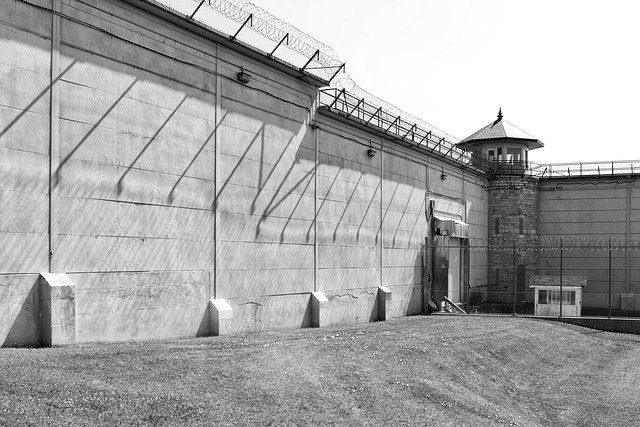Urban mobility faces challenges from population growth and environmental concerns, but Alternative Transportation Options (ATOs) like biking, walking, car-sharing, and e-scooters offer sustainable alternatives. Effective ATO infrastructure requires understanding diverse demographic needs. Planners can address issues by integrating various transport options, including public transit, ride-sharing, and bike-sharing programs. Strategies seen in cities like Copenhagen and ride-sharing apps promote cycling, walking, and micro-mobility, reducing traffic congestion and carbon emissions. The future of transportation includes Alternative Transportation Options like electric vehicles (EVs), autonomous driving, and smart city technologies for efficient, eco-friendly travel.
In urban areas, understanding mobility challenges is key to shaping efficient transportation systems. As cities grow, existing loopholes in these systems become more apparent, creating gaps that hinder seamless travel experiences. This article explores these challenges and delves into the rise of alternative transportation options as potential solutions. Through case studies, we uncover successful strategies for closing these gaps, and look ahead to future trends and innovations designed to bridge transport disparities globally.
- Understanding Urban Mobility Challenges
- Exploring Existing Loopholes in Transportation Systems
- The Rise of Alternative Transportation Options
- Case Studies: Successful Loophole Closure Strategies
- Future Trends and Innovations to Bridge Transport Gaps
Understanding Urban Mobility Challenges

Urban mobility challenges stem from a complex interplay of factors, including population density, infrastructure limitations, and environmental concerns. As cities grow, traditional modes of transportation often fall short in addressing congestion, air pollution, and accessibility issues. The need for efficient and sustainable Alternative Transportation Options (ATOs) has become paramount to mitigate these problems.
These challenges demand innovative solutions that go beyond conventional cars and public transit. ATOs such as biking, walking, car-sharing services, and electric scooters offer viable alternatives that promote reduced traffic congestion, lower carbon emissions, and improved overall urban mobility. Understanding the unique needs of different demographics is crucial in designing effective ATO infrastructure, ensuring a more livable and sustainable future for urban populations.
Exploring Existing Loopholes in Transportation Systems

Transportation systems, while designed to connect communities and facilitate mobility, often present hidden gaps and loopholes that can hinder efficiency and sustainability. These loopholes may range from inadequate infrastructure for alternative transportation options like biking or walking, to regulatory inconsistencies that favor traditional modes of transport over innovative solutions. By exploring these existing loopholes, policymakers and urban planners can identify areas ripe for improvement.
For instance, many cities struggle with integrating efficient public transit with everyday travel needs. Loopholes in scheduling, ticketing, and accessibility within multi-modal transportation networks create barriers to entry for alternative options. Addressing these issues requires a holistic approach that considers the seamless integration of various modes—including traditional buses and trains, car-sharing services, e-scooters, and bike-sharing programs—to offer users diverse, convenient, and cost-effective choices.
The Rise of Alternative Transportation Options

In recent years, the landscape of transportation has undergone a significant transformation with the rise of alternative options. This shift is driven by a growing awareness of environmental concerns and a desire for more efficient mobility solutions. Electric vehicles (EVs), for instance, have gained immense popularity as they offer a cleaner and more sustainable form of transportation compared to traditional gasoline-powered cars. The increasing availability of charging infrastructure further fuels this trend, making EVs an attractive choice for both personal and commercial use.
Additionally, shared mobility services like ride-sharing and car-sharing platforms have disrupted the traditional ownership model. These options provide flexibility and cost savings, especially in urban areas where traffic congestion is a persistent issue. The rise of these alternative transportation methods not only reduces carbon emissions but also contributes to more efficient land use, offering a promising path towards sustainable and resilient cities.
Case Studies: Successful Loophole Closure Strategies

Successful case studies in loophole closure often highlight the innovative adoption of alternative transportation options. Cities like Copenhagen have revolutionized urban mobility by prioritizing cyclists and pedestrians, reducing reliance on private vehicles and closing gaps in accessibility. This strategy not only enhances environmental sustainability but also improves public health by encouraging active commuting.
Another notable example is the integration of ride-sharing and micro-mobility services in dense urban areas. Apps that facilitate carpooling and electric scooter rentals provide flexible, cost-effective, and eco-friendly alternatives to traditional car ownership, addressing congestion and pollution issues. These case studies demonstrate that by closing transportation loopholes, cities can foster more livable, resilient, and sustainable communities.
Future Trends and Innovations to Bridge Transport Gaps

The future of transportation looks promising, with a growing emphasis on sustainable and innovative solutions to bridge existing gaps in mobility. One prominent trend is the rise of Alternative Transportation Options such as electric vehicles (EVs), autonomous driving technology, and shared mobility services like bike-sharing and car-pooling apps. These advancements not only reduce environmental impact but also enhance efficiency and accessibility in urban areas.
Additionally, smart city technologies are playing a pivotal role in optimizing traffic flow and public transportation systems. Through data analytics, real-time tracking, and integrated communication networks, cities can better manage congestion, improve safety, and provide more reliable services. The integration of Alternative Transportation Options with smart city infrastructure promises to create seamless, efficient, and eco-friendly travel experiences for residents and visitors alike.
As we’ve explored, urban mobility challenges can stem from various loopholes in existing transportation systems. However, the rise of alternative transportation options offers promising solutions. Case studies have demonstrated successful strategies for closing these gaps, paving the way for future innovations that will further revolutionize urban mobility. By addressing these issues proactively, cities can create more efficient, equitable, and sustainable transportation networks.






